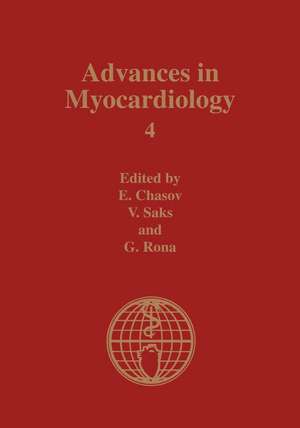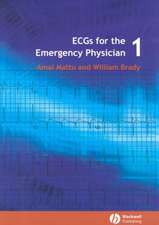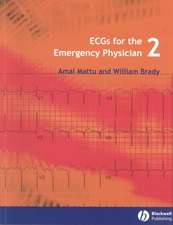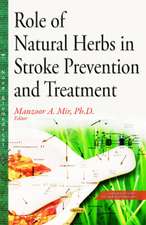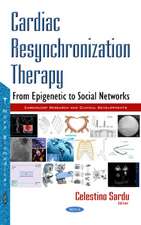Advances in Myocardiology: Volume 4
Editat de Eugene I. Chazoven Limba Engleză Paperback – 5 mar 2013
| Toate formatele și edițiile | Preț | Express |
|---|---|---|
| Paperback (2) | 397.62 lei 6-8 săpt. | |
| Springer Us – 5 mar 2013 | 397.62 lei 6-8 săpt. | |
| Springer Us – 27 noi 2013 | 398.18 lei 6-8 săpt. |
Preț: 397.62 lei
Preț vechi: 418.55 lei
-5% Nou
Puncte Express: 596
Preț estimativ în valută:
76.09€ • 78.61$ • 63.33£
76.09€ • 78.61$ • 63.33£
Carte tipărită la comandă
Livrare economică 26 martie-09 aprilie
Preluare comenzi: 021 569.72.76
Specificații
ISBN-13: 9781475744439
ISBN-10: 1475744439
Pagini: 664
Ilustrații: XIV, 649 p.
Dimensiuni: 178 x 254 x 35 mm
Greutate: 1.13 kg
Ediția:Softcover reprint of the original 1st ed. 1983
Editura: Springer Us
Colecția Springer
Locul publicării:New York, NY, United States
ISBN-10: 1475744439
Pagini: 664
Ilustrații: XIV, 649 p.
Dimensiuni: 178 x 254 x 35 mm
Greutate: 1.13 kg
Ediția:Softcover reprint of the original 1st ed. 1983
Editura: Springer Us
Colecția Springer
Locul publicării:New York, NY, United States
Public țintă
ResearchCuprins
Cardiac Hypertrophy, Adaptation, and Pathophysiology.- Pathogenesis and Prophylaxis of Cardiac Lesions in Stress.- Energy Metabolism of the Heart in Catecholamine-Induced Myocardial Injury: Concentration-Dependent Effects of Epinephrine on Enzyme Release, Mechanical Function, and “Oxygen Wastage”.- The Permissive Role of Catecholamines in the Pathogenesis of Hamster Cardiomyopathy.- Adaptive and Pathological Alterations in Experimental Cardiac Hypertrophy.- Reflections on What Makes the Heart Grow.- Force-Velocity-Length Relationship during Cardiac Hypertrophy: Time Course of Activation.- Hemodynamics, Regional Myocardial Blood Flow, and Sarcoplasmic Reticulum Calcium Uptake in Right Ventricular Hypertrophy and Failure.- Myocardial Energy Metabolism of Congestive and Hypertrophic Cardiomyopathy in Man.- Effects of Cardiac Work and Leucine on Protein Turnover.- The Rate of Cardiac Structural Protein Synthesis in Perfused Heart.- DNA Synthesis and Mitotic Activity in Adult Atrial Cardiocytes in Culture.- DNA Synthesis in Atrial Myocytes of Rats with Aortic Stenosis.- DNA Synthetic Activity of Right and Left Ventricular Biopsy Specimens in Patients with Cardiomyopathy.- Comparative Changes in the 32P Labeling of Adenine and Uracil Nucleotides in the Hypertrophying Rat Heart.- Increased Synthesis of the Phosphorylated Form of the Myosin Light Chains in Cardiac Hypertrophy in the Rat.- Reconstitution of Heavy Chain and Light Chain 1 in Cardiac Subfragment-1 from Hyperthyroid and Euthyroid Rabbit Hearts.- Mechanisms of Degradation of Myofibrillar and Nonmyofibrillar Protein in Heart.- Vasoactive Peptides and Regulation of Hemodynamics in Different Functional States of the Organism.- Pathogenesis of Immune-Mediated Carditis in Monkeys.- Immunologic Studies in InfectiveEndocarditis.- Adaptation of the Organism during Long-Lasting Survival with a Total Artificial Heart.- A Possible Mechanism of Adriamycin Cardiotoxicity: Inhibition of NADP-Linked Isocitrate Dehydrogenase.- Effects of Propranolol and Hydrocortisone Pretreatment on Radiation-Induced Myocardial Injury in Rats.- Inhibition of Vitamin D3-Induced Vascular Calcification by Carbocromen.- Cardiac Hypoxia, Ischemia, and Infarction.- Mitochondrial Function in Normal and Hypoxic States of the Myocardium.- Cardiac Synthesis and Degradation of Pyridine Nucleotides and the Level of Energy-Rich Phosphates Influenced by Various Precursors.- Effect of Exogenous Amino Acids on the Contractility and Nitrogenous Metabolism of Anoxic Heart.- Regulation of Cardiac Contractility and Glycolysis by Cyclic Nucleotides during Hypoxia.- Hypoxia, Calcium, and Contracture as Mediators of Myocardial Enzyme Release.- Cyclic AMP and Early Contractile Failure.- Release of Purine Nucleosides and Oxypurines from the Isolated Perfused Rat Heart.- Pathophysiology of Irreversible Ischemic Injury: The Border Zone Controversy.- Acid Hydrolases in the Initiation of Ischemic Myocardial Necrosis.- Release of Prostacyclin into the Coronary Venous Blood in Patients with Coronary Arterial Disease.- The Effects of Systole on Left Ventricular Blood Flow.- Prolonged Depletion of ATP Because of Delayed Repletion of the Adenine Nucleotide Pool following Reversible Myocardial Ischemic Injury in Dogs.- Cytochrome Oxidase Activity of Mitochondria from Ischemic and Reperfused Myocardium.- The Effect of Experimentally Induced Myocardial Ischemia on the Norepinephrine Metabolism of the Dog Heart.- Reperfusion Injury: A Possible Link between Catecholamine-Induced and Ischemic Myocardial Alterations.- Ultrastructural, Functional, and Metabolic Correlates in the Ischemic Rat Heart: Effects of Free Fatty Acid.- Detection of Intracellular Anoxia and Its Relationship to Onset of Hemodynamic Dysfunction and ST-Segment Elevation in the Intact Dog Heart.- The Relationship between Glucose Utilization during Ischemia and Ventricular Fibrillation during Early Reperfusion: Evidence for Two Populations of Guinea Pig Hearts.- Correlation among Water Content, Left Ventricular Function, Coronary Blood Flow, and Myocardial Metabolism after Hypothermic Ischemic Cardiac Arrest.- Serial Changes in Cytosolic, Mitochondrial, and Lysosomal Enzymes and Cardiac Myosin Light Chain II in Plasma following Coronary Ligation in Conscious Closed-Chest Dogs.- Myosin Light Chain Phosphorylation during Regional Myocardial Ischemia.- Myocardial Infarct Size from Serum Cardiac Myosin Light Chain: Clinical and Experimental Studies.- Biopsy Assessment of Preservation during Open-Heart Surgery with Cold Cardioplegic Arrest.- Calcium Antagonistic Activity and Myocardial Ischemic Protection by Both Stereoisomers of Verapamil.- The Effects of ? Blockade and Partial Agonist Activity during Myocardial Ischemia.- Cyclic Nucleotides and Changes in Protein Kinase Activity Ratio in the Ischemic and Nonischemic Myocardium.- Myocardial Biosynthesis of Prostaglandins with Special Consideration of Prostacyclin and the Influence of Dipyridamole and Propranolol.- Influence of Cardiovascular Drugs on Platelet Aggregation.- Effects of L-Carnitine on Tissue Levels of Free Fatty Acid, Acyl CoA, and Acylcarnitine in Ischemic Heart.- Effect of Coenzyme Q10 on Hypertrophied Ischemic Myocardium during Aortic Cross Clamping for 2 hr, from the Aspect of Energy Metabolism.- Preservation of Oxidative Phosphorylation by Lidocaine in Ischemic and ReperfusedMyocardium.- On the Mechanism of Action of the Antianginal Drug Nonachlazine on Ischemic Myocardium.- Studies on Slow Cardiac Action Potentials Occurring in Potassium-Rich Media as a Simulation of the Early Phase of Myocardial Infarction: Influence of Potassium-Conductance Blockers and Antiarrhythmic Drugs.- Antiischemic Effects of Molsidomine in an Experimental Model of Coronary Model of Coronary Artery Stenosis.- Effect of Molsidomine on Spontaneous Ventricular Fibrillation following Myocardial Ischemia and Reperfusion in the Dog.- Contributors.
